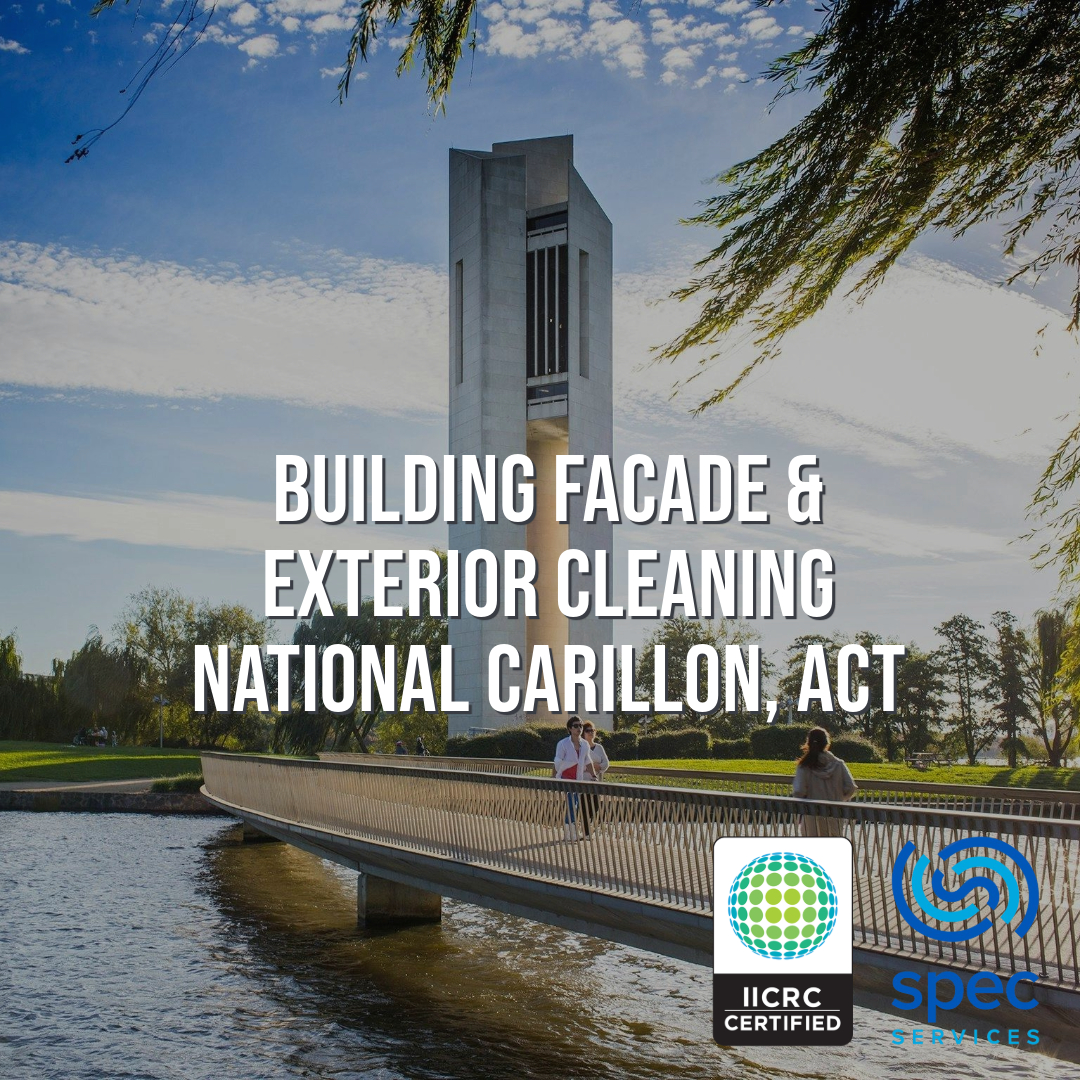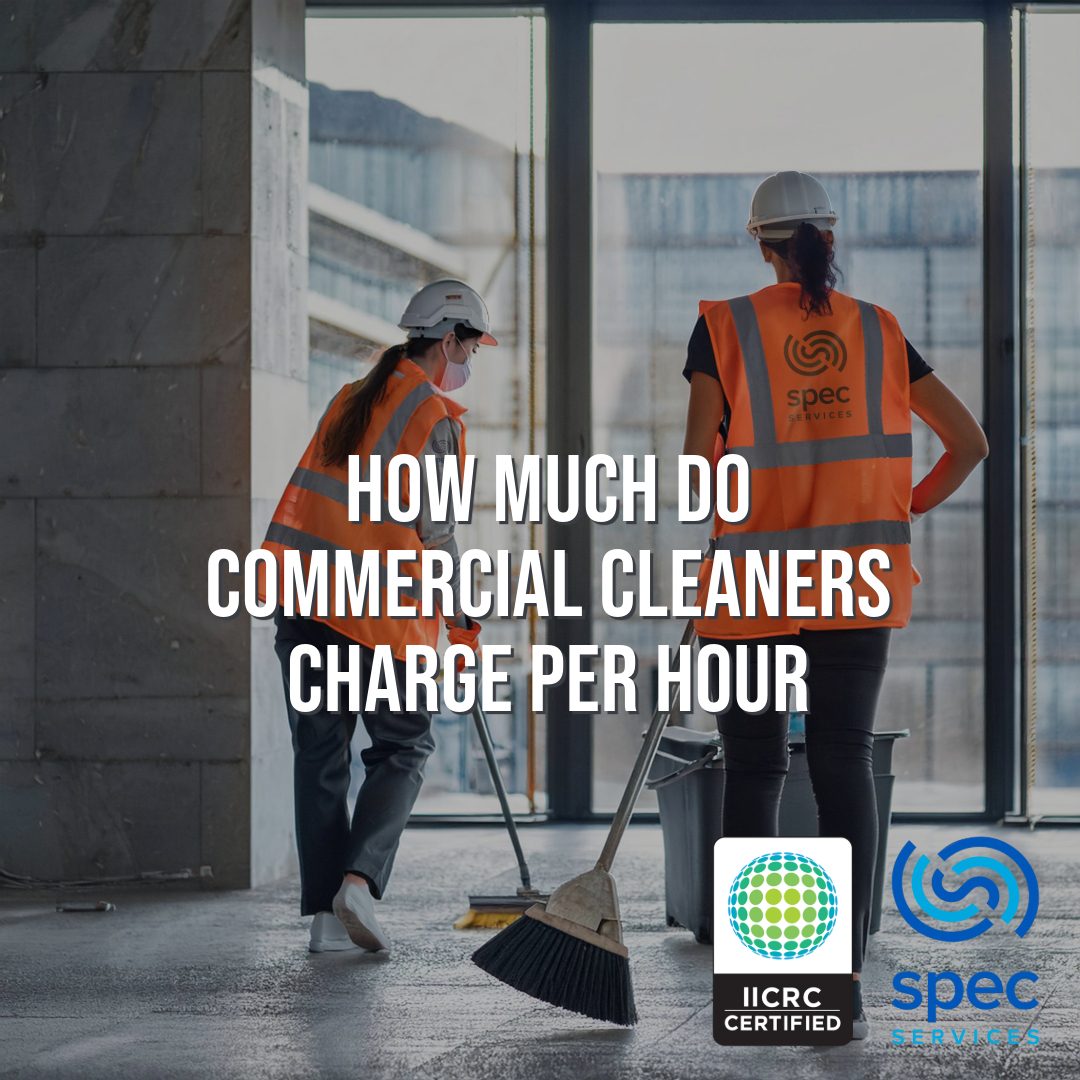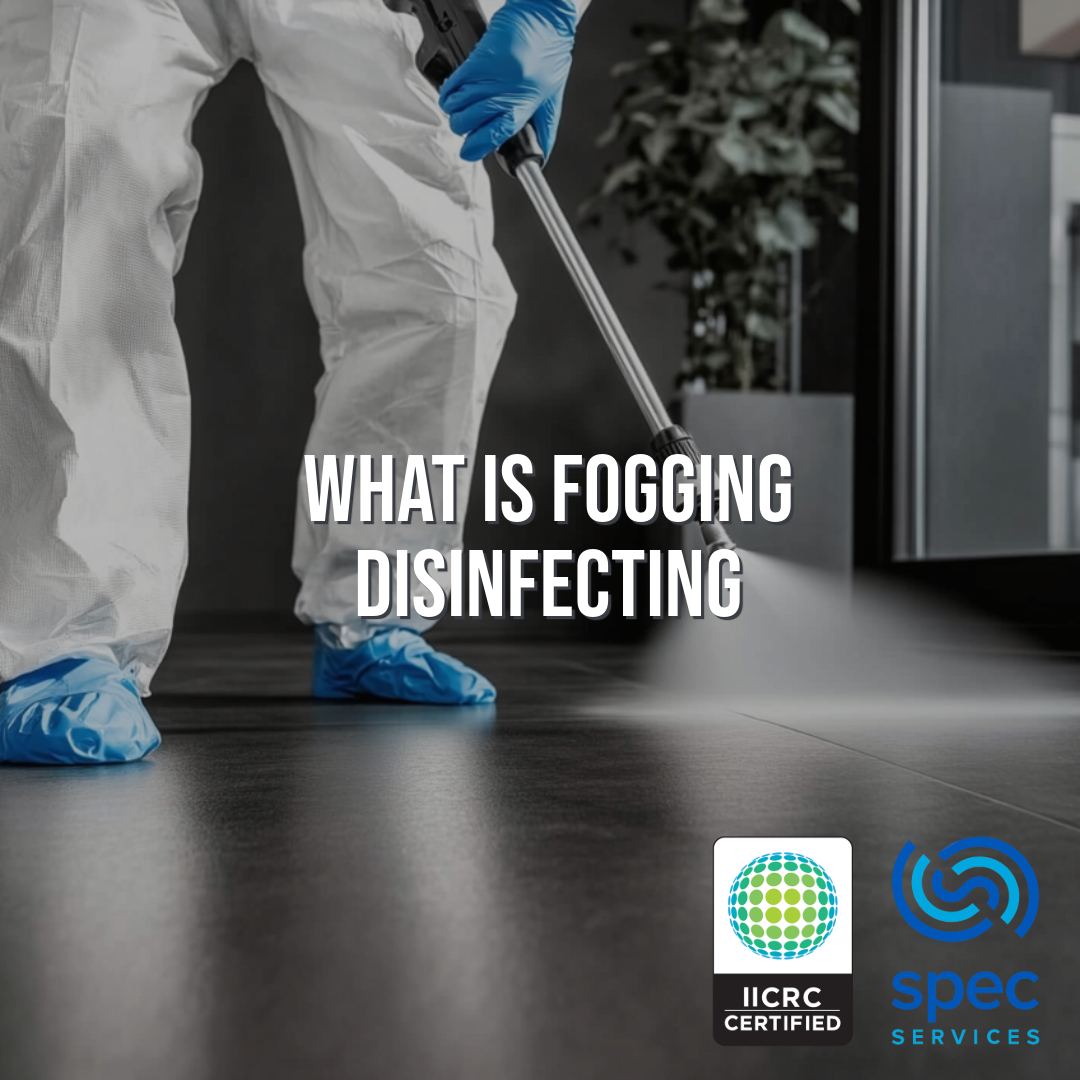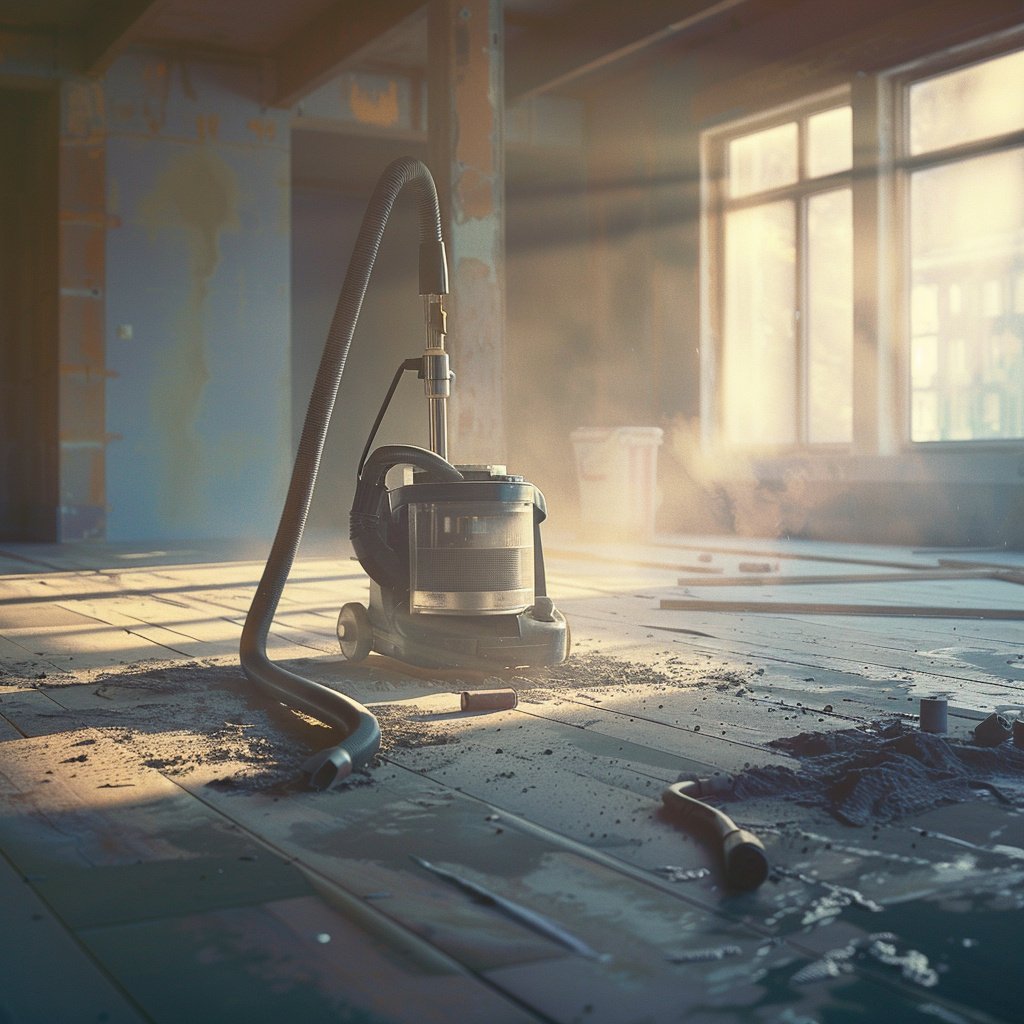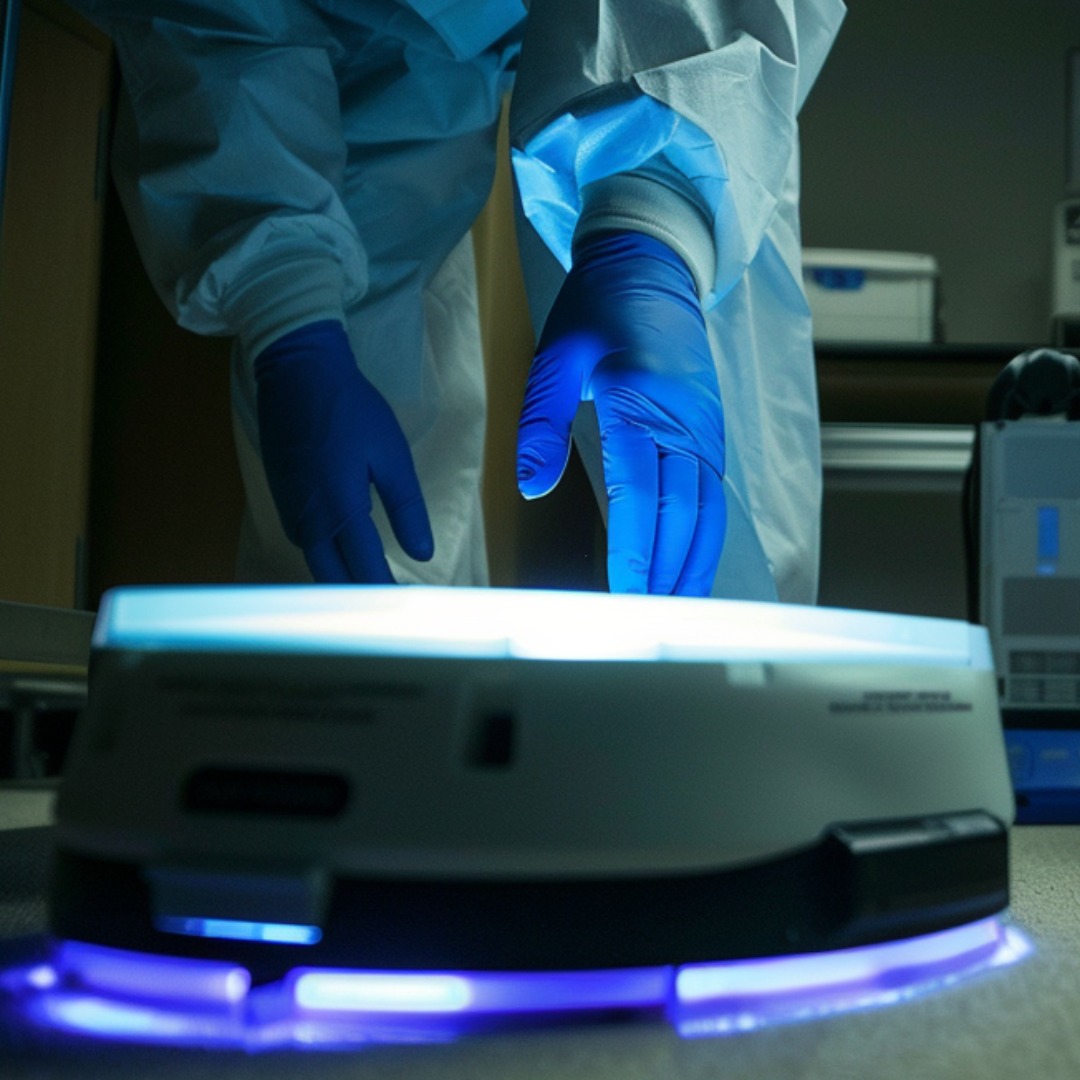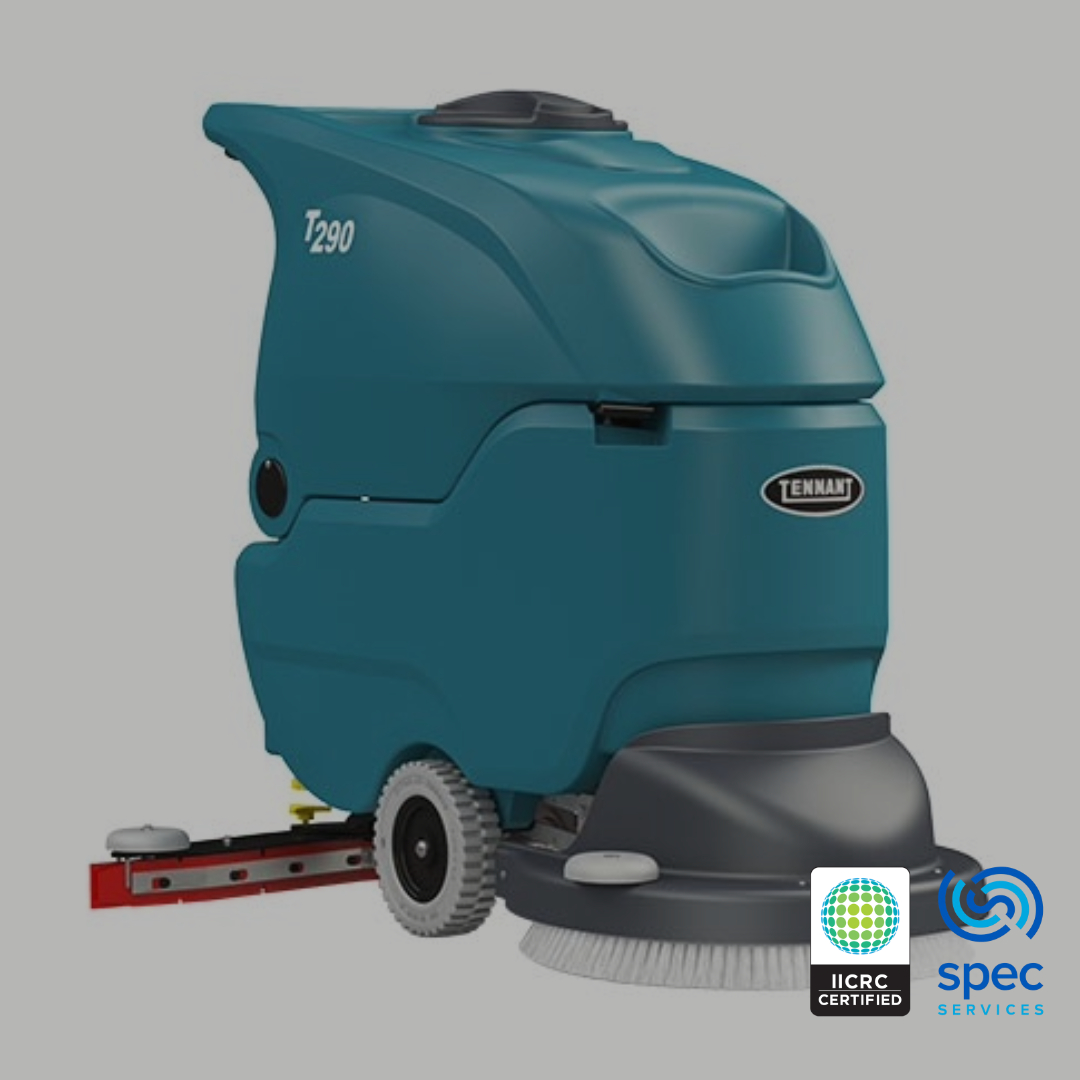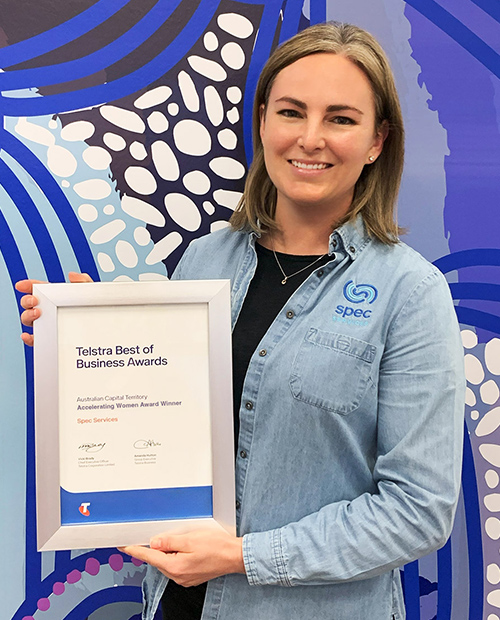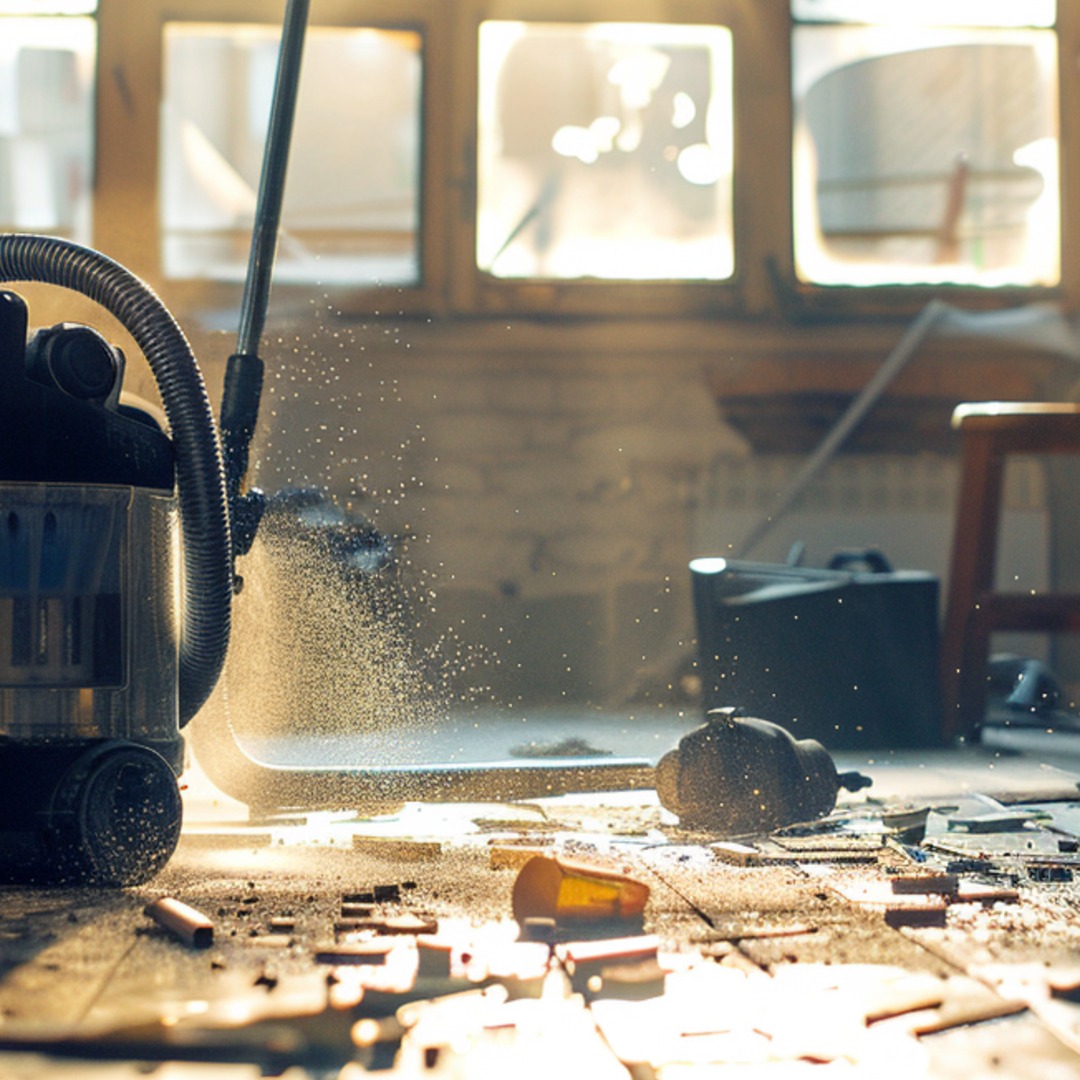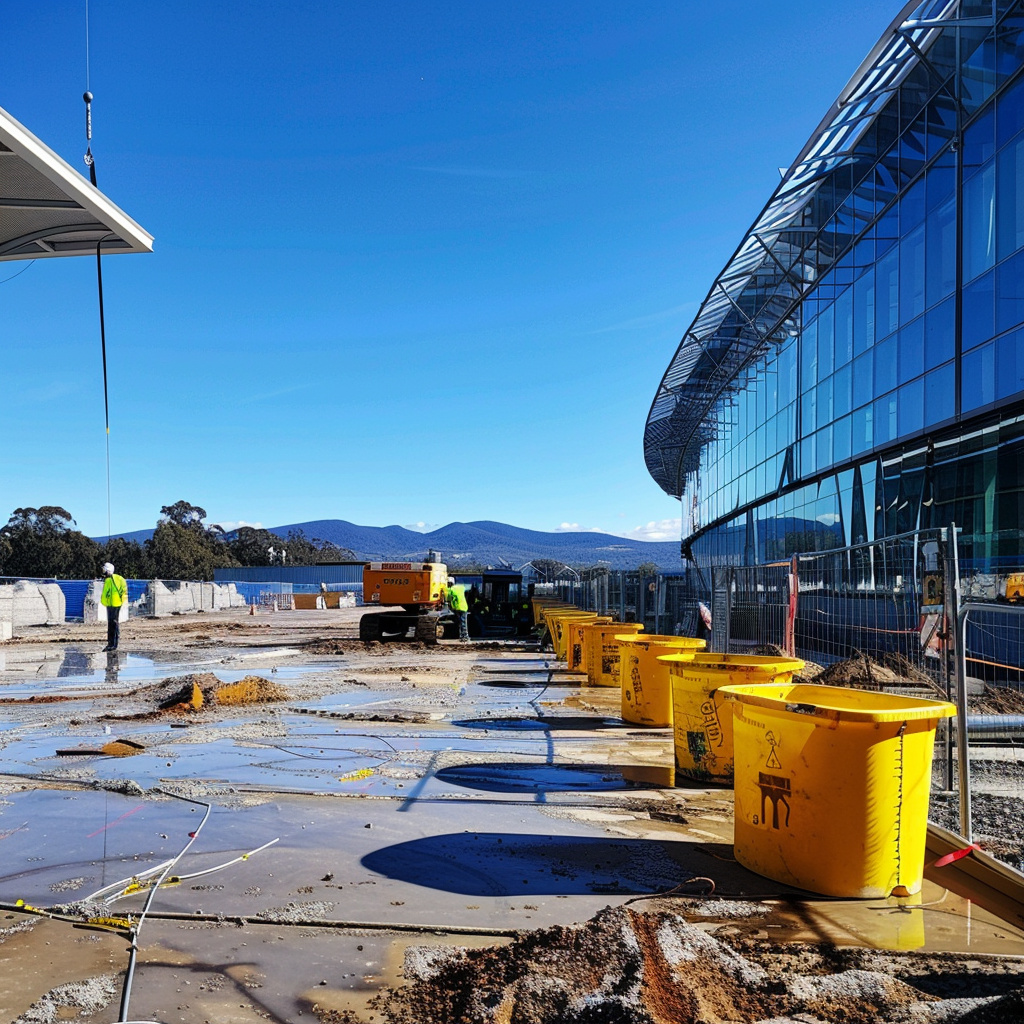The project involved multiple service types, including building façade and exterior cleaning, biohazard services, and asbestos removal, completed with precision and respect for the Carillon’s historical and environmental significance.
How Much Do Commercial Cleaners Charge per Hour Australia
In Australia, commercial cleaners charge between $45 to $65 per hour, influenced by factors like area size, cleaning frequency, and building type. Regular cleaning of large offices costs more than occasional cleaning of small shops. Urban areas may see higher rates due to transportation and living expenses. Additional services, such as waste management, increase costs.
What Is Fogging?
What Is Fogging? Explore Industry Specific Disinfectant Protocols
Fogging is a disinfection method that emits a fine mist to sanitize airborne pathogens and high-touch surfaces. Common in healthcare, food, and educational sectors, it employs techniques like wet, dry, and hydrogen peroxide fogging. Proper protocols ensure regulatory compliance, effective coverage, and safe environments.
Types of Fogging
Types of fogging include room fogging for full coverage, often with hydrogen peroxide for sensitive areas; direct fogging for specific surfaces in active spaces; and touchpoint fogging for high-contact areas like transit hubs. Integrated strategies combine these methods for comprehensive sanitation across environments.
Equipment and Application
Fogging equipment includes thermal foggers for dense fog and mosquito control, cold foggers for indoor disinfection, and ULV foggers for precise droplet application. Key components like compressors and HAF fans ensure even fog distribution. Proper air circulation and chemical compatibility enhance effectiveness and safety during application.
Best Practices Overview
Best practices for fogging include pre-cleaning surfaces, sealing areas to control ventilation, and following evacuation protocols for two hours. Choose fogging techniques suited to the environment and use approved, broad-spectrum disinfectants. Adhere to manufacturer safety guidelines to ensure effective and safe disinfection.
Industries Utilizing Fogging
Industries like healthcare and food production use fogging to enhance sanitation. Healthcare facilities apply fogging to eliminate pathogens in hard-to-reach and airborne areas, using TGA-registered disinfectants. In the food industry, fogging targets microorganisms on surfaces and in large spaces, improving safety and reducing contamination risks.
Healthcare Disinfection Protocols
Healthcare disinfection protocols involve cleaning surfaces with EPA-registered detergents, frequent disinfection of high-touch areas, and TGA-approved disinfectants for noncritical devices. Semicritical devices require high-level disinfection, while critical devices need sterilization. Adherence to contact times, training, and documentation ensures safety and infection control.
Educational Sector Practices
Activity and Disinfection Importance:
Classrooms and corridors buzz with activity, highlighting the importance of stringent disinfectant protocols in educational environments.
Daily Cleaning Focus:
Daily cleaning targets classrooms, offices, and common areas, with emphasis on high-touch surfaces like door handles and railings.
Cleaning and Disinfection Sequence:
Cleaning precedes disinfection to minimize germs, using TGA-registered products for safety and effectiveness.
Staff Training and PPE:
Staff are trained in proper disinfection methods and wear appropriate PPE.
Enhanced Measures:
Measures include using disinfectant wipes and automated systems like ultraviolet light technology.
Ventilation and Inspections:
Regular ventilation and inspections maintain air quality and protocol effectiveness.
Fogging for High-Risk Areas:
Disinfectant misters address high-risk areas such as nurse’s offices and childcare centers.
Green Cleaning Products:
Emphasis is placed on green cleaning products, third-party certifications, and adhering to safety guidelines to protect students and staff.
Management Responsibility:
The Building Services Department manages cleaning and maintenance protocols to ensure a safe and healthy learning environment.
Food Industry Standards
Food industry standards require sanitization of food contact surfaces with approved products like hypochlorites and quaternary ammonium compounds, ensuring 99.999% bacteria reduction within 30 seconds. A seven-step cleaning process, regulatory compliance, proper solution preparation, and staff training are vital for consumer safety.
Industrial Fogging Application Methods
Industrial fogging methods include thermal fogging for deep penetration in large spaces, low-pressure fogging for dry, wide coverage, high-pressure fogging for heavily soiled surfaces, and electrostatic fogging for high-touch points. These techniques ensure efficient disinfection tailored to industrial needs, minimizing cross-contamination.
Benefits of Fogging
- High Effectiveness:
Achieves a 99.99% effectiveness rate in eliminating germs, bacteria, viruses, mold, fungi, and allergens. - Odor Removal:
Deodorizes spaces by eradicating odors from sources such as garbage and tobacco smoke. - Airborne Contaminant Reduction:
Reduces airborne contaminants while disinfecting hard-to-reach areas. - Safe and Non-Toxic:
Utilizes TGA-approved chemicals that are safe for humans, animals, and sensitive electronics. - Fast and Efficient:
Covers large areas quickly, minimizing disruptions and lost working time. - Extensive Coverage:
Effective in intricate spaces and hidden areas, making it suitable for complex environments like schools and gyms. - Child and Pet Safety:
The chemicals used are safe around children and pets post-disinfection, ensuring a worry-free environment.
Limitations and Challenges
- Technical Limitations:
- Potential harm to sensitive electronics due to water damage or chemical corrosion (e.g., hydrogen peroxide and chlorides).
- Limited efficacy against certain pathogens, requiring specific protocols.
- Risk of damage to delicate surfaces if not handled properly.
- Operational Challenges:
- Room evacuation and HVAC system shutdowns are required.
- Specialized training for proper application can be time-consuming and disruptive.
- Health Risks:
- Potential respiratory issues and toxicity, particularly for vulnerable populations.
- Economic Factors:
- High costs of equipment and chemicals.
- Ongoing maintenance needs and potential supply chain disruptions.
- Regulatory and Legal Issues:
- Compliance with regulations and insurance liabilities complicate adoption.
Fogging is a vital disinfection method that ensures efficient coverage and hygiene in various industries. While offering significant benefits like fast action, odor removal, and safety for sensitive environments, challenges such as health risks, technical limitations, and economic burdens require careful consideration. Industries like healthcare and food production tailor fogging protocols to meet stringent safety standards. Continued innovation is essential to enhance fogging techniques and address its associated challenges.
How to Vacuum Construction Dust
Vacuum construction dust effectively with a HEPA vacuum, starting top-down. Clean carpets, baseboards, and tight spaces while using air purifiers.
Spec Services Avetta 2024 Diversity Leader for Workplace Inclusion
Spec Services Recognized as an Avetta 2024 Diversity Leader for Workplace Inclusion.
Canberra, Australia – Spec Services, a women-owned business based in Canberra, proudly announces its recognition as an Avetta 2024 Diversity Leader. This prestigious award celebrates Spec Services’ unwavering dedication to fostering Diversity, Equity, and Inclusion (DEI) across its workforce, operations, and client partnerships.
This accolade underscores Spec Services’ mission to amplify diverse voices, create equitable opportunities, and champion a workplace culture where inclusivity thrives. The company’s commitment extends beyond its internal operations, influencing community initiatives and partnerships that prioritize equality and belonging.
“We are honored to be recognized for our dedication to diversity, equity, and inclusion both in the workplace and our broader community,” said Katie Hale, Founder and Managing Director of Spec Services. “While Spec Services humbly accepts this award, we also understand that the work to promote an inclusive culture of DEI is ongoing. We remain committed to investing in our people and the communities we serve to build a more inclusive future.”

Spec Services integrates its values of inclusivity and responsibility into every aspect of its business. As a women-owned company, it takes pride in its management practices and corporate structure, which reflect its core principles. The firm actively prioritizes Indigenous culture, gender equality, and the recognition of veterans within its workforce.
With safety as its highest priority, Spec Services ensures the well-being of its employees and clients while cultivating a supportive environment that values every team member’s unique contributions. Together with its partners, the company is dedicated to driving progress through bold action and shared responsibility.
This recognition by Avetta further cements Spec Services’ role as a leader in diversity and workplace inclusion, setting a standard for other organizations to follow.
For more information about Spec Services and its commitment to DEI, visit https://www.specservices.com.au/supporting-iwd2024/.
Advances in Forensic Cleaning Technology: What You Need to Know
Advances in forensic cleaning technology improve precision with HEPA filters, UV light ☎ 1300 999 885
What Is the Cost of an Industrial Floor Scrubber?
What Is the Cost of an Industrial Floor Scrubber?
Industrial floor scrubbers for commercial and construction cleaning come at diverse price points, with basic models starting at $998 AUD and premium machines reaching $22,000 AUD. The equipment type directly impacts costs – walk-behind units typically represent lower investments, while ride-on and autonomous versions command higher prices due to their advanced technology. Smart features like self-navigation systems boost the price tag significantly. Operating expenses extend beyond initial purchase, requiring cleaning chemicals, replacement components, and regular servicing. Small businesses or occasional users might benefit from rental options, which start at $75 per day. Key considerations include facility size, cleaning frequency, surface types, and labor requirements – these factors determine whether investing in ownership makes financial sense versus temporary rentals. Evaluating both upfront and long-term costs ensures selecting equipment that balances performance with budget constraints.
Learn More
- Basic models: $998 – mid-range to premium ride-on units: $22,000+
- Daily rental rates: starting at $75
- Annual maintenance costs: $150-$700
- Cost factors: advanced features and brand reputation
- Selection criteria: facility size and cleaning needs
Factors Affecting Floor Scrubber Costs
Industrial floor scrubber pricing depends on multiple aspects that impact your purchasing decision. Basic walk-behind units start at lower price points, while sophisticated robotic models demand premium investments. Each machine’s capabilities shape its cost – self-driving mechanisms, long-lasting batteries, and specialized filtration add significant value.
Market leaders typically charge more due to proven reliability and superior build quality. Smart buyers examine the full financial picture, including upkeep expenses, service agreements, and parts accessibility.
Equipment rental presents an attractive alternative, letting businesses utilize professional-grade cleaning machines without purchasing outright. A thorough analysis of these elements ensures you select equipment matching both performance requirements and budget constraints.
Manufacturers offer various configurations across price tiers, from entry-level compact units ideal for small spaces to heavy-duty industrial models designed for extensive square footage. Understanding your specific cleaning challenges helps narrow down appropriate options within your target budget range.
Types of Industrial Floor Scrubbers
Industrial floor scrubbers range from basic models to sophisticated machines, each designed for distinct cleaning challenges.
Small facilities benefit from nimble walk-behind units, which let cleaning staff maneuver around obstacles and through narrow spaces.
Larger warehouses and retail spaces demand ride-on machines, boosting productivity by eliminating operator fatigue during extended cleaning sessions.
Automated robotic scrubbers excel in predictable environments, working around the clock to maintain pristine floors without human supervision.
Traditional single-disc equipment tackles various flooring materials with specialized pads and brushes, while dual-disc systems deliver enhanced performance through simultaneous scrubbing action.
Each category serves unique purposes: walkbehinds offer precision, ride-ons maximize coverage, robotics provide consistency, and disc variations handle specific surface requirements.
Matching the right scrubber to your facility’s layout, traffic patterns, and maintenance schedule ensures optimal cleaning results.
Popular Models and Their Prices
The industrial floor cleaning market presents diverse options across price ranges.
Starting with compact solutions, the i-scrub 21B stands as an economical entry point at $998.00 AUD, making it accessible for small business owners.
Mid-range offerings include the i-mop XL Basic at $5,590.00 AUD and the Viper AS510B walk-behind unit at $5,635.00 AUD, both delivering professional-grade cleaning for medium facilities.
Organizations requiring advanced air filtration benefit from the Fimap EMx HEPA system, priced at $7,990.00 AUD, which excels in environments demanding pristine air quality.
Large facility managers often invest in the Nilfisk Viper AS1050R ride-on scrubber at $22,020.00 AUD, maximizing efficiency through its superior coverage capacity and operator comfort.
These machines represent strategic investments, with each model addressing specific operational demands while offering distinct technological advantages in commercial floor maintenance.
Maintenance and Operating Costs
Running an industrial floor scrubber brings additional expenses beyond the purchase price. Each year, expect to spend $100-$500 on cleaning solutions and $50-$200 on replacement components.
The machine needs professional checkups twice annually to stay in top shape. Power consumption adds minimal costs, ranging from ten to fifty cents per operating hour whether you plug in or use batteries.
A smart upfront investment includes proper staff training, which typically runs $200-$500 – this single expense helps prevent costly mistakes and extends equipment life.
Understanding these financial aspects lets businesses accurately budget for their cleaning equipment while maximizing its value through proper care and operation.
Rental vs. Purchase Options
Comparing industrial floor scrubber acquisition methods means analyzing both temporary and permanent solutions.
A rental provides quick access without major financial commitment, making it ideal for limited-use scenarios. Daily rental fees start at $75, while purchasing costs climb to $12,400 for premium models.
Businesses experiencing seasonal cleaning demands benefit from rental flexibility, as contracts adapt to usage patterns. Regular maintenance tasks make ownership practical for facilities needing daily cleaning operations.
The inclusion of technical support and repair coverage in rental packages eliminates unexpected repair expenses, enabling companies to direct resources toward essential operations. This comprehensive service package makes rentals particularly attractive for organizations wanting predictable maintenance schedules and expert support.
Understanding your facility’s square footage, floor type, and cleaning frequency helps determine the most cost-effective solution between these two options.
Cost Comparison by Brand
Exploring industrial floor scrubber pricing reveals distinct market segments across manufacturers. A budget-friendly entry point starts with Nilfisk’s SC100 model at $2,755.50, making it accessible for small businesses.
Moving up the range, Karcher’s BD30/4 delivers professional performance at $3,295.00, targeting facilities with limited storage space.
Mid-tier solutions include Nilfisk’s SC250 ($4,724.50) and the i-mop XL Basic ($5,590.00 AUD), which excel in versatility and maneuverability. The Viper AS510B ($5,635.00 AUD) stands out for its efficiency in medium commercial spaces.
Organizations managing extensive industrial zones typically invest in advanced units like the Nilfisk Viper AS1050R, a ride-on model priced at $22,020.00 AUD.
This price spectrum reflects increasing capabilities, from basic cleaning tasks to sophisticated industrial applications, helping buyers match equipment investments to their operational scale and cleaning intensity.
Frequently Asked Questions
What Is the Life Expectancy of a Floor Scrubber?
A well-maintained floor scrubber typically functions for 5-10 years. Daily upkeep directly impacts equipment longevity, making consistent care essential for maximizing performance. Smart maintenance includes checking batteries, replacing worn brushes, inspecting squeegees, and addressing mechanical issues promptly. Commercial models used frequently in warehouses might need replacement sooner than units operating in lighter-duty environments like small retail spaces. Investing in quality parts and scheduling professional servicing helps extend your machine’s operational lifespan beyond standard expectations. Following manufacturer guidelines for cleaning, storage, and component replacement ensures optimal functionality throughout the scrubber’s service years.
What Does a Commercial Floor Scrubber Do?
Commercial floor scrubbers tackle tough cleaning tasks by combining automated brushing with specialized cleaning agents. These machines excel at sanitizing expansive indoor spaces like warehouses, retail stores, and hospitals. Unlike manual methods, their motorized system applies consistent pressure to eliminate embedded debris while simultaneously extracting dirty water. This dual-action approach not only maintains cleaner surfaces but also helps prevent slip hazards by leaving floors nearly dry. Thanks to their robust construction and advanced filtering mechanisms, these units significantly reduce cleaning time while providing superior results compared to conventional methods.
Which Is the Best for Cleaning the Floors of Factories?
Factory floors require specialized cleaning equipment beyond standard machines. Industrial-grade ride-on scrubbers, particularly the Nilfisk Viper AS1050R, excel at maintaining vast manufacturing spaces. This commercial model combines powerful scrubbing mechanisms with ergonomic operation, making it ideal for removing oil, grease, and debris across expansive concrete surfaces. The unit’s durable construction withstands constant use while its large-capacity tanks minimize refill stops during lengthy cleaning sessions.
Do Floor Scrubbers Really Work?
Floor scrubbers deliver exceptional cleaning results across various surfaces. These machines excel at extracting embedded grime while sanitizing floors through a combination of mechanical action and cleaning solutions. Modern scrubbers incorporate multiple cleaning stages – from initial sweeping to final drying – making spaces both visibly clean and hygienically safer. Industrial-grade models like the Tennant T300 or Karcher BD 50/50 demonstrate particular effectiveness in commercial settings, while compact units serve perfectly for residential use. Their automated systems cut cleaning time in half compared to manual methods, protect floor finishes, and maintain consistent results across large areas. The measurable benefits include reduced bacterial counts, restored floor appearance, and minimized water usage through precise solution control. Users report significant improvements in facility maintenance standards after switching from traditional mop-and-bucket approaches to these mechanical cleaning systems.
Spec Services 2024 WINNER of the Telstra Best of Business Awards
Spec Services 2024 WINNER of the Telstra Best of Business Awards
Best Vacuum for Construction Dust
Best Vacuum for Construction Dust
When tackling post-construction cleanup, a robust industrial vacuum becomes essential. The gold standard H-Class filtration captures microscopic particles down to 99.995%, protecting your lungs from dangerous silica and wood particles that can lead to respiratory issues. Industrial models delivering 20 kPa or higher suction power excel at lifting stubborn debris, while built-in filter cleaning systems prevent loss of performance during extended jobs. The most practical units handle both liquid spills and dry materials, making them versatile worksite companions. Add specialized nozzles and brushes to your toolkit – they dramatically reduce dust clouds during cleaning.
Top performers in the category include the Festool CTL MIDI with HEPA filtration, DeWalt’s DWV012 with automatic filter cleaning, and Bosch’s GAS 35 M AFC featuring smart sensor technology. These machines make hazardous cleanup tasks safer and more efficient while ensuring workplace air quality standards are maintained.
Learn More
- H-Class vacuum ratings – 99.995% dust/silica particle capture
- 20+ kPa suction power for debris removal
- Built-in self-cleaning mechanism
- Wet/dry functionality for versatile site cleanup
- Dust control attachments for airborne particle prevention
Understanding Construction Dust
Construction dust requires careful attention due to its hazards in building environments. Workers face diverse risks from microscopic particles released during common tasks. Breaking down concrete releases dangerous silica crystals, while sawing wood creates harmful sawdust that can damage lungs. Each year, more than 500 workers lose their lives specifically because of silica-related diseases, making proper safety measures essential.
To protect workers, industrial vacuums come in three safety levels – L, M, and H – each designed for specific hazard levels. These ratings match Maximum Acceptable Concentration guidelines, which help identify cancer-causing versus non-cancer-causing particles. The strictest H-class vacuums trap nearly all dangerous dust, while L-class models suit basic cleanup needs.
SafeWork Australia’s guidelines emphasize selecting appropriate vacuum equipment based on specific job risks. Modern dust extraction systems now feature advanced filtration technology that captures particles too small for the eye to see.
This technology proves crucial because microscopic dust can penetrate deep into workers’ airways, leading to chronic health problems over time. Regular equipment maintenance and proper protective gear create multiple safety barriers against these invisible yet serious workplace threats.
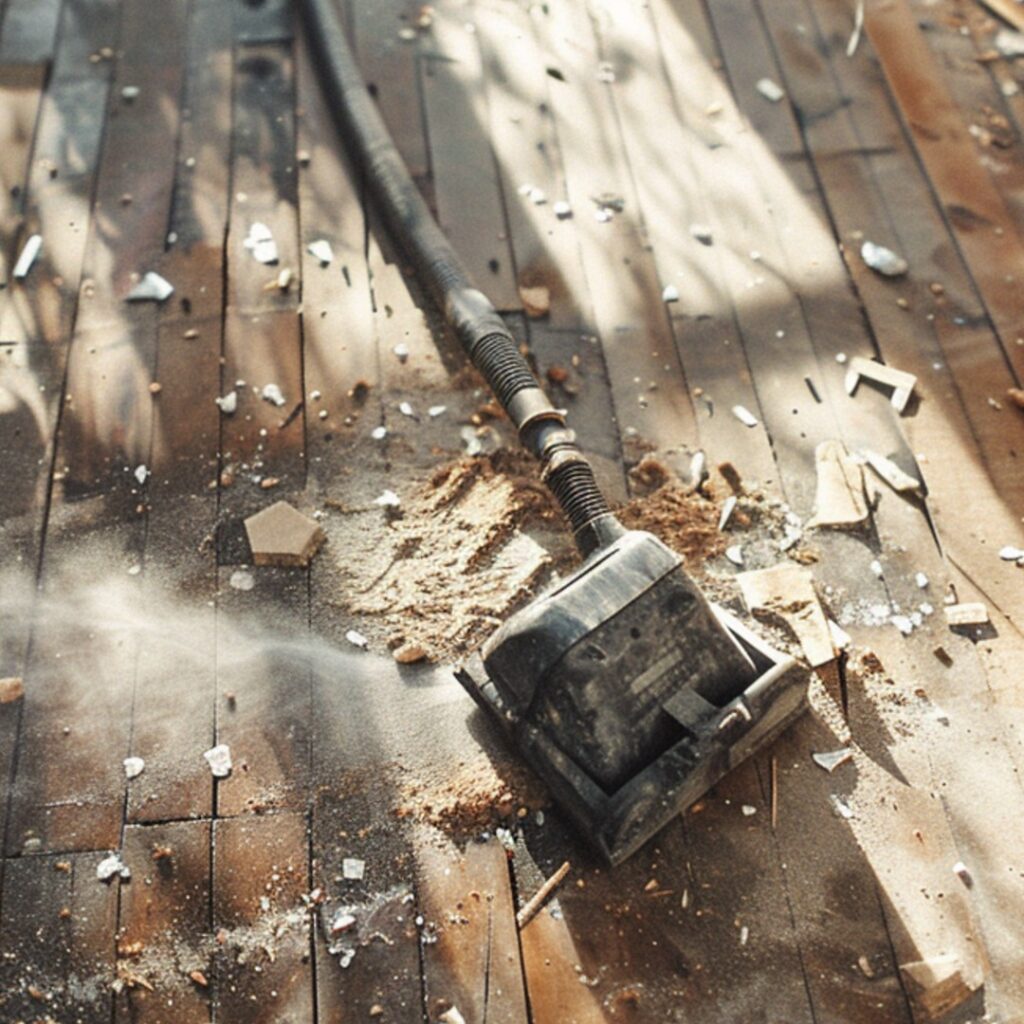
Health Risks of Dust Exposure
Working in construction exposes employees to dangerous dust particles that can trigger life-threatening medical conditions. Each breath draws microscopic bits of silica from concrete work into the respiratory system, where roughly 5% remains trapped inside lung tissue.
Medical research links this accumulation directly to deadly diseases like silicosis, killing more than 500 construction professionals yearly. Beyond silica, wood particles release cancer-causing agents into job site air.
These invisible threats make proper air filtering essential – specifically through high-efficiency HEPA systems that capture harmful materials before workers inhale them. Federal safety guidelines mandate strict limits on dust exposure because even brief contact with these airborne hazards damages breathing passages permanently.
Smart companies prioritize dust management through advanced ventilation equipment, protecting their teams from devastating illnesses that develop slowly but strike with devastating impact. The microscopic nature of construction dust means workers need comprehensive safeguards since standard masks often fail to block the tiniest, most dangerous particles.
Choosing the Right Vacuum
When selecting a vacuum for construction sites, your choice directly impacts workplace safety and cleanliness standards. A well-chosen model prevents hazardous dust from spreading while making cleanup more efficient.
Essential features worth investing in:
Top-grade H-Class filters trap microscopic particles at a 99.995% rate, protecting workers from inhaling harmful materials. Look for units delivering suction power above 20 kPa – this ensures thorough removal of stubborn construction debris and embedded particles.
Modern self-cleaning mechanisms, exemplified by Kärcher’s TACT technology, eliminate filter clogs automatically. This maintains peak performance throughout extended use periods.
Your vacuum should integrate seamlessly with power tools via specialized extraction attachments, capturing dust right at the source.
Multi-functional models handling both wet spills and dry materials prove invaluable. The Festool CTL MIDI and DeWalt DWV012 excel in this category, tackling anything from concrete dust to standing water. Their robust design withstands daily jobsite demands while offering exceptional mobility.
For optimal results, prioritize units with large-capacity tanks, durable wheels, and ergonomic handles. These practical features minimize work interruptions and reduce operator strain during intensive cleanup sessions.
Features of Effective Vacuums
A well-equipped vacuum makes construction cleanup more manageable and thorough.
Modern machines with H-Class filters eliminate 99.995% of microscopic particles, safeguarding workers from harmful silica and sawdust exposure. Powerful suction capacity – surpassing 20 kPa – pulls out stubborn materials embedded in surfaces and crevices.
Multi-purpose models handle both water spills and debris, adapting to various jobsite demands. Smart technology, such as Kärcher’s TACT system, automatically shakes filters clean while running, maintaining optimal performance throughout use.
When connected to power tools, specialized dust-catching attachments prevent particles from becoming airborne, creating healthier breathing conditions.
By selecting equipment with these essential capabilities, crews can transform cluttered construction zones into pristine spaces while protecting respiratory health.
Leading manufacturers like DeWalt, Bosch and Festool offer reliable options that incorporate these advanced features for professional results.
Top Vacuum Recommendations
Construction site cleanup demands specialized vacuum equipment that matches specific debris challenges. The following machines excel at removing hazardous particles while protecting worker health:
The professional-grade Kärcher NT 40/1 Tact Te H stands out with its exceptional H-Class filtration system, trapping 99.995% of microscopic particles – essential for safeguarding respiratory health during extensive demolition work.
ProTeam MegaVac combines industrial strength with precision filtration. Its Level Four filtering mechanism and robust 9.9 amp motor extract embedded dust from porous surfaces, making it invaluable for drywall and concrete cleanup operations.
Bosch’s VAC090AH 9-Gallon model revolutionizes dust management through its self-cleaning filter technology. The integrated HEPA system captures allergens and fine particulates, while maintaining consistent suction throughout extended use.
The Karcher WD 5/P transforms post-construction cleanup with its dual wet-dry capabilities. Its 6.6-gallon tank accommodates substantial debris loads, while specialized filters prevent dust clouds during operation.
For mobility-focused needs, the Hoover Commercial Lightweight Canister maximizes portability without sacrificing power. Its ergonomic design reduces operator fatigue during multi-room cleanups, while maintaining professional-grade suction strength.
Each vacuum incorporates distinct engineering solutions for construction-specific challenges, ensuring thorough site cleanup while maintaining air quality standards.
Dust Control Best Practices
A well-executed dust management strategy protects both construction teams and project outcomes.
Modern H-Class vacuums remove nearly all dangerous particles, achieving 99.995% filtration rates. Smart maintenance schedules for extraction equipment ensure continuous alignment with SafeWork Australia requirements and national standards.
Match your vacuum specifications to specific site contaminants. The latest TACT systems boost filter performance while maintaining strong suction power.
Spraying water on work areas prevents particles from becoming airborne, creating safer conditions.
Smart waste handling involves careful material separation and proper disposal according to regulated classifications.
These combined methods create cleaner job sites, protect respiratory health, and maintain optimal ventilation while meeting compliance standards.
Frequently Asked Questions
What Is the Best Vacuum for Construction Dust?
Selecting a vacuum for construction sites requires specialized equipment that excels at capturing microscopic debris. Industrial-grade machines equipped with H-class certification deliver superior performance by trapping harmful particles as small as 0.3 microns. Look for models featuring automatic filter-cleaning technology, which prevents clogs while maintaining consistent suction throughout extended use.
Top recommendations include the Festool CTL MIDI, which combines powerful extraction with HEPA filtration, and the DeWalt DWV012, offering automatic filter purging and wet-dry capabilities. These professional-grade units protect workers’ respiratory health by eliminating airborne silica dust and other hazardous materials common in construction environments.
For optimal results, seek vacuums with sealed systems, reinforced hoses, and multiple stage filtration. Robust containers made from impact-resistant materials withstand jobsite conditions while providing ample capacity for debris collection. Consider units with tool-triggered activation, allowing seamless integration with power tools during cutting, grinding, or sanding tasks.
How to Remove Dust From Room After Building Work?
Building dust requires a systematic cleaning approach. Begin at ceiling level, methodically progressing downward to trap all particles effectively. A vacuum equipped with HEPA filtration captures microscopic debris, preventing it from becoming airborne again. Wipe surfaces thoroughly with damp microfiber cloths, which grab and hold onto fine dust particles better than standard cleaning materials. For areas with moisture or larger debris, industrial wet/dry vacuums prove invaluable. This top-to-bottom strategy ensures thorough removal while preventing recontamination of already-cleaned spaces. Consider adding an air purifier during the process to capture floating particles and improve air quality faster.
How to Clean Dust After Construction?
Tackling post-construction cleanup requires a systematic approach. Begin with a specialized HEPA-filtered vacuum cleaner, which captures microscopic construction particles that regular vacuums miss. Collect larger fragments and mixed waste using industrial wet/dry equipment. Work methodically from ceiling to floor, ensuring cleaned sections remain spotless while you progress downward. Professional-grade tools like the Festool CT MIDI or Milwaukee backpack vacuum deliver exceptional results for thorough debris removal. This careful process prevents cross-contamination and creates a safe, breathable environment, especially important for those with respiratory sensitivities.
Can You Vacuum Construction Dust?
Construction dust requires specialized vacuum equipment for safe removal. Basic household machines lack proper filtration systems, making them dangerous for collecting ultra-fine particles. Professional-grade units featuring HEPA filters trap microscopic debris effectively, preventing harmful materials from circulating through your living space. Top models like the DeWalt DWV012 or Festool CTL MIDI excel at managing concrete powder, drywall remnants, and wood particles. These industrial vacuums incorporate sealed mechanisms and multi-stage filtration, ensuring hazardous elements remain contained. For optimal safety during cleanup, select equipment rated specifically for construction waste management, as standard residential cleaners risk dispersing irritants that could trigger respiratory issues or contaminate indoor environments.
Best Vacuum for Construction Dust Cleaning After Building Work
When tackling post-construction cleanup, a robust industrial vacuum becomes essential. The gold standard H-Class filtration captures microscopic particles down to 99.995%, protecting your lungs from dangerous silica and wood particles that can lead to respiratory issues. Industrial models delivering 20 kPa or higher suction power excel at lifting stubborn debris, while built-in filter cleaning systems prevent loss of performance during extended jobs. The most practical units handle both liquid spills and dry materials, making them versatile worksite companions. Add specialized nozzles and brushes to your toolkit – they dramatically reduce dust clouds during cleaning. Top performers include the Festool CTL MIDI with HEPA filtration, DeWalt’s DWV012 with automatic filter cleaning, and Bosch’s GAS 35 M AFC featuring smart sensor technology. These machines transform hazardous cleanup tasks into safer, more efficient operations while maintaining crucial workplace air quality standards.
Learn More
• H-Class vacuum ratings – 99.995% dust/silica particle capture • 20+ kPa suction power for debris removal • Built-in self-cleaning mechanism • Wet/dry functionality for versatile site cleanup • Dust control attachments for airborne particle prevention
Understanding Construction Dust
Construction dust requires careful attention due to its hazards in building environments. Workers face diverse risks from microscopic particles released during common tasks. Breaking down concrete releases dangerous silica crystals, while sawing wood creates harmful sawdust that can damage lungs. Each year, more than 500 workers lose their lives specifically because of silica-related diseases, making proper safety measures essential.
To protect workers, industrial vacuums come in three safety levels – L, M, and H – each designed for specific hazard levels. These ratings match Maximum Acceptable Concentration guidelines, which help identify cancer-causing versus non-cancer-causing particles. The strictest H-class vacuums trap nearly all dangerous dust, while L-class models suit basic cleanup needs.
SafeWork Australia’s guidelines emphasize selecting appropriate vacuum equipment based on specific job risks. Modern dust extraction systems now feature advanced filtration technology that captures particles too small for the eye to see.
This technology proves crucial because microscopic dust can penetrate deep into workers’ airways, leading to chronic health problems over time. Regular equipment maintenance and proper protective gear create multiple safety barriers against these invisible yet serious workplace threats.
Health Risks of Dust Exposure
Working in construction exposes employees to dangerous dust particles that can trigger life-threatening medical conditions. Each breath draws microscopic bits of silica from concrete work into the respiratory system, where roughly 5% remains trapped inside lung tissue.
Medical research links this accumulation directly to deadly diseases like silicosis, killing more than 500 construction professionals yearly. Beyond silica, wood particles release cancer-causing agents into job site air.
These invisible threats make proper air filtering essential – specifically through high-efficiency HEPA systems that capture harmful materials before workers inhale them. Federal safety guidelines mandate strict limits on dust exposure because even brief contact with these airborne hazards damages breathing passages permanently.
Smart companies prioritize dust management through advanced ventilation equipment, protecting their teams from devastating illnesses that develop slowly but strike with devastating impact. The microscopic nature of construction dust means workers need comprehensive safeguards since standard masks often fail to block the tiniest, most dangerous particles.
Choosing the Right Vacuum
When selecting a vacuum for construction sites, your choice directly impacts workplace safety and cleanliness standards. A well-chosen model prevents hazardous dust from spreading while making cleanup more efficient.
Essential features worth investing in:
Top-grade H-Class filters trap microscopic particles at a 99.995% rate, protecting workers from inhaling harmful materials. Look for units delivering suction power above 20 kPa – this ensures thorough removal of stubborn construction debris and embedded particles.
Modern self-cleaning mechanisms, exemplified by Kärcher’s TACT technology, eliminate filter clogs automatically. This maintains peak performance throughout extended use periods.
Your vacuum should integrate seamlessly with power tools via specialized extraction attachments, capturing dust right at the source.
Multi-functional models handling both wet spills and dry materials prove invaluable. The Festool CTL MIDI and DeWalt DWV012 excel in this category, tackling anything from concrete dust to standing water. Their robust design withstands daily jobsite demands while offering exceptional mobility.
For optimal results, prioritize units with large-capacity tanks, durable wheels, and ergonomic handles. These practical features minimize work interruptions and reduce operator strain during intensive cleanup sessions.
Features of Effective Vacuums
A well-equipped vacuum makes construction cleanup more manageable and thorough.
Modern machines with H-Class filters eliminate 99.995% of microscopic particles, safeguarding workers from harmful silica and sawdust exposure. Powerful suction capacity – surpassing 20 kPa – pulls out stubborn materials embedded in surfaces and crevices.
Multi-purpose models handle both water spills and debris, adapting to various jobsite demands. Smart technology, such as Kärcher’s TACT system, automatically shakes filters clean while running, maintaining optimal performance throughout use.
When connected to power tools, specialized dust-catching attachments prevent particles from becoming airborne, creating healthier breathing conditions.
By selecting equipment with these essential capabilities, crews can transform cluttered construction zones into pristine spaces while protecting respiratory health.
Leading manufacturers like DeWalt, Bosch and Festool offer reliable options that incorporate these advanced features for professional results.
Top Vacuum Recommendations
Construction site cleanup demands specialized vacuum equipment that matches specific debris challenges. The following machines excel at removing hazardous particles while protecting worker health:
The professional-grade Kärcher NT 40/1 Tact Te H stands out with its exceptional H-Class filtration system, trapping 99.995% of microscopic particles – essential for safeguarding respiratory health during extensive demolition work.
ProTeam MegaVac combines industrial strength with precision filtration. Its Level Four filtering mechanism and robust 9.9 amp motor extract embedded dust from porous surfaces, making it invaluable for drywall and concrete cleanup operations.
Bosch’s VAC090AH 9-Gallon model revolutionizes dust management through its self-cleaning filter technology. The integrated HEPA system captures allergens and fine particulates, while maintaining consistent suction throughout extended use.
The Karcher WD 5/P transforms post-construction cleanup with its dual wet-dry capabilities. Its 6.6-gallon tank accommodates substantial debris loads, while specialized filters prevent dust clouds during operation.
For mobility-focused needs, the Hoover Commercial Lightweight Canister maximizes portability without sacrificing power. Its ergonomic design reduces operator fatigue during multi-room cleanups, while maintaining professional-grade suction strength.
Each vacuum incorporates distinct engineering solutions for construction-specific challenges, ensuring thorough site cleanup while maintaining air quality standards.
Dust Control Best Practices
A well-executed dust management strategy protects both construction teams and project outcomes.
Modern H-Class vacuums remove nearly all dangerous particles, achieving 99.995% filtration rates. Smart maintenance schedules for extraction equipment ensure continuous alignment with SafeWork Australia requirements and national standards.
Match your vacuum specifications to specific site contaminants. The latest TACT systems boost filter performance while maintaining strong suction power.
Spraying water on work areas prevents particles from becoming airborne, creating safer conditions.
Smart waste handling involves careful material separation and proper disposal according to regulated classifications.
These combined methods create cleaner job sites, protect respiratory health, and maintain optimal ventilation while meeting compliance standards.
Frequently Asked Questions
What Is the Best Vacuum for Construction Dust?
Selecting a vacuum for construction sites requires specialized equipment that excels at capturing microscopic debris. Industrial-grade machines equipped with H-class certification deliver superior performance by trapping harmful particles as small as 0.3 microns. Look for models featuring automatic filter-cleaning technology, which prevents clogs while maintaining consistent suction throughout extended use.
Top recommendations include the Festool CTL MIDI, which combines powerful extraction with HEPA filtration, and the DeWalt DWV012, offering automatic filter purging and wet-dry capabilities. These professional-grade units protect workers’ respiratory health by eliminating airborne silica dust and other hazardous materials common in construction environments.
For optimal results, seek vacuums with sealed systems, reinforced hoses, and multiple stage filtration. Robust containers made from impact-resistant materials withstand jobsite conditions while providing ample capacity for debris collection. Consider units with tool-triggered activation, allowing seamless integration with power tools during cutting, grinding, or sanding tasks.
How to Remove Dust From Room After Building Work?
Building dust requires a systematic cleaning approach. Begin at ceiling level, methodically progressing downward to trap all particles effectively. A vacuum equipped with HEPA filtration captures microscopic debris, preventing it from becoming airborne again. Wipe surfaces thoroughly with damp microfiber cloths, which grab and hold onto fine dust particles better than standard cleaning materials. For areas with moisture or larger debris, industrial wet/dry vacuums prove invaluable. This top-to-bottom strategy ensures thorough removal while preventing recontamination of already-cleaned spaces. Consider adding an air purifier during the process to capture floating particles and improve air quality faster.
How to Clean Dust After Construction?
Tackling post-construction cleanup requires a systematic approach. Begin with a specialized HEPA-filtered vacuum cleaner, which captures microscopic construction particles that regular vacuums miss. Collect larger fragments and mixed waste using industrial wet/dry equipment. Work methodically from ceiling to floor, ensuring cleaned sections remain spotless while you progress downward. Professional-grade tools like the Festool CT MIDI or Milwaukee backpack vacuum deliver exceptional results for thorough debris removal. This careful process prevents cross-contamination and creates a safe, breathable environment, especially important for those with respiratory sensitivities.
Can You Vacuum Construction Dust?
Construction dust requires specialized vacuum equipment for safe removal. Basic household machines lack proper filtration systems, making them dangerous for collecting ultra-fine particles. Professional-grade units featuring HEPA filters trap microscopic debris effectively, preventing harmful materials from circulating through your living space. Top models like the DeWalt DWV012 or Festool CTL MIDI excel at managing concrete powder, drywall remnants, and wood particles. These industrial vacuums incorporate sealed mechanisms and multi-stage filtration, ensuring hazardous elements remain contained. For optimal safety during cleanup, select equipment rated specifically for construction waste management, as standard residential cleaners risk dispersing irritants that could trigger respiratory issues or contaminate indoor environments.
Complying With Australian Builders Cleaning Regulations
Complying With Australian Builders Cleaning Regulations
Australian builders must follow cleaning regulations set by the Australian Building Codes Board and Safe Work Australia to ensure compliance and worker safety. Local councils enforce additional district-specific requirements affecting permits and inspections. Detailed documentation, audits, and professional cleaning teams equipped with proper tools and supervision are essential for thorough sanitation. Adhering to these standards reduces hazards, simplifies inspections, and meets customer expectations.
The comprehensive cleaning process encompasses several critical areas:
- Removal of construction debris and dust
- Sanitization of work surfaces and common areas
- Proper disposal of hazardous materials
- Regular maintenance of air filtration systems
- Documentation of cleaning procedures and schedules
Success depends on:
- Understanding current regulations
- Training staff in proper cleaning methods
- Investing in appropriate cleaning equipment
- Maintaining detailed cleaning records
- Conducting regular compliance checks
Learn More
• National cleaning protocols compliance (ABCB and Safe Work Australia)
• Local council cleanliness standards adherence
• Regular site audits and hazardous materials management
• Quality control systems and site monitoring procedures
• Experienced cleaning professionals with industry certification
National Cleaning Standards Overview
Builders must follow strict national cleaning protocols to ensure spaces meet essential health and safety requirements. These guidelines, developed through collaboration between the Australian Building Codes Board and Safe Work Australia, outline precise methods for sanitizing critical areas – from glass surfaces to air ducts.
Meeting these benchmarks directly impacts project completion, as local authorities require verification of thorough cleaning before issuing final approvals.
Construction cleanup involves two crucial elements: removing all building waste and applying appropriate cleaning solutions safely. This process eliminates potential hazards that could affect future residents.
A meticulous approach to these standards results in immaculate spaces that exceed basic cleanliness requirements while creating environments that promote occupant wellbeing.
When cleaning teams implement these protocols correctly, they transform construction zones into pristine, move-in ready properties that meet all regulatory requirements.
Health and Safety Compliance
Construction cleanup demands strict adherence to national cleaning protocols to ensure everyone’s wellbeing. Organizations must develop comprehensive safety plans that align with Safe Work Australia’s requirements, emphasizing proper risk assessment and control measures.
Teams need thorough instruction on managing dangerous substances, particularly when dealing with asbestos-containing materials and surfaces coated with lead-based paint. Proper certification ensures your staff meets legal obligations while safeguarding both current workers and eventual building users.
Smart debris management reduces workplace hazards by keeping sites organized and contaminant-free. Regular site audits help identify potential risks before they escalate into serious problems.
Key safety measures include:
- Using appropriate personal protective equipment
- Implementing proper chemical storage protocols
- Maintaining clear emergency exit paths
- Documenting all safety procedures and incidents
- Testing air quality regularly
A well-executed safety program creates measurable improvements in workplace conditions. Teams should document each step of the cleanup process, tracking progress while ensuring full compliance with industry regulations.
This systematic approach helps prevent accidents and creates accountability throughout the project timeline.
Local Council Regulations
Australian councils set strict site cleanliness rules that construction teams must follow before obtaining final approval.
Understanding your area’s specific requirements matters because each district enforces unique standards depending on the build type and location. The best approach involves reaching out to your council representatives during the planning phase.
Professional cleaners who specialize in construction sites bring valuable expertise about local compliance measures. Your permit hinges on proper waste management and thorough site sanitization – from removing leftover materials to detailed surface cleaning.
Smart builders maintain regular contact with council officers and partner with experienced cleaning teams to ensure smooth project completion. This proactive strategy prevents costly holdups and helps deliver properties that exceed inspection criteria, making the handover process straightforward for everyone involved.
The investment in proper site maintenance ultimately saves time while demonstrating respect for community standards and safety protocols.
Quality Assurance Practices
Meeting council standards extends beyond basic cleanliness protocols – it demands comprehensive quality control systems.
Construction sites specifically must integrate detailed cleaning protocols that strictly follow Australian Standards for Post-Construction work.
Essential components for maintaining excellence include:
- Site monitoring through systematic walk-throughs that identify potential problems before they escalate
- Staff development via hands-on workshops that build technical expertise and instill best practices
- Process tracking with detailed logs and checklists that create accountability and resolve any potential client concerns
Each step establishes measurable benchmarks while building a foundation of excellence that supports both regulatory compliance and customer satisfaction.
The systematic approach transforms standard cleaning duties into precise, professional operations that consistently meet industry requirements.
Best Practices for Active Sites
A well-organized construction site demands thorough daily maintenance to protect workers and meet regulations. Teams should conduct frequent cleanups throughout each phase, following strict national building codes for sanitization.
Smart disposal methods keep debris minimal and satisfy municipal guidelines prior to site reviews. Protective covers shield completed work zones, ensuring high-quality results during the finishing stages.
Strategic placement of dust control systems prevents airborne particles from spreading, which safeguards lung health and satisfies workplace safety requirements.
Education plays a vital role – crews need proper training in sanitation protocols. This knowledge empowers workers to uphold industry cleaning benchmarks while fostering a safer, more productive environment.
Scope of Builders Clean
The builders clean phase transforms construction zones into livable spaces through systematic deep cleaning. This essential process eliminates construction residue from interior and exterior areas, with special attention to walls, floors, windows, and ceiling surfaces. Accessibility to utility spaces like garages and storage units remains crucial for thorough cleaning execution.
The builders clean protocol encompasses:
- Methodical disinfection across all contact points
- Full integration with Building Code of Australia (BCA) requirements
- Strict alignment with current national hygiene standards
A properly executed builders clean delivers two critical outcomes: it creates an aesthetically pristine environment while establishing health and safety conditions that protect incoming residents.
This meticulous approach enables seamless property transitions from construction completion to occupancy readiness.
Each surface undergoes detailed inspection and cleaning, removing every trace of building materials, dust, and debris. Service providers tackle high-touch areas first, then progress systematically through the property, ensuring no space remains untreated.
This methodical process transforms raw construction sites into move-in ready environments that meet both regulatory requirements and client expectations.
Differentiating Clean Types
Building professionals recognize two essential cleaning stages during construction projects. The initial builders clean tackles construction remnants, removing sawdust, paint specks, and material waste after major work ends. This step ensures safety and creates a workable environment for finishing touches.
The subsequent final clean transforms the space into move-in condition, addressing details like polished surfaces, spotless glass, and pristine fixtures. A thorough builders clean prevents costly delays because overlooked debris can damage new installations or require additional maintenance.
Expert cleaners apply specific techniques for each phase – industrial equipment handles tough construction residue during builders cleans, while precise detailing tools achieve the immaculate finish required for handover. Local regulations and safety protocols guide both processes, making professional expertise vital for meeting compliance standards.
Construction managers who plan these distinct cleaning phases properly protect their investment and maintain project timelines. Understanding this sequence helps stakeholders allocate resources effectively and achieve superior results at each stage.
Frequently Asked Questions
What Are the Penalties for Non-Compliance With Cleaning Regulations?
Failure to meet required cleaning standards brings serious consequences, including substantial monetary penalties and potential court proceedings. Organizations face direct business impacts when regulatory violations occur, as their credibility suffers among clients and industry partners. Understanding and following all applicable cleaning requirements helps prevent these significant operational and financial risks.
How Often Should Cleaning Audits Be Conducted?
Monthly cleaning audits serve as a critical quality control measure. Regular evaluations enable supervisors to track sanitation performance, spot potential problems, and implement solutions before issues escalate. By examining cleaning practices each month, organizations maintain health standards while documenting protocol adherence. This consistent schedule creates accountability among staff members and validates that sanitization meets required benchmarks. Monthly reviews also provide data trends, helping management allocate resources effectively and adjust cleaning procedures based on actual facility needs.
Are Subcontractors Required to Follow the Same Cleaning Regulations?
Subcontractors must follow identical cleaning regulations as primary contractors to ensure project-wide quality control. Following standardized protocols protects worker health, maintains workplace safety, and delivers consistent results across all construction phases. When every team member implements proper sanitation measures, it creates an efficient workflow while meeting regulatory compliance requirements.
What Cleaning Products Are Recommended for Compliance?
Regulatory-compliant facilities should select cleaning supplies that meet strict safety and environmental guidelines. Approved options include hospital-grade sanitizers, plant-based degreasers, and pH-neutral surface cleaners. Many companies opt for Green Seal or EPA-registered products like Simple Green Pro HD, Diversey Virex, or Seventh Generation Professional line. These solutions effectively remove contaminants while protecting worker health and satisfying inspection requirements. Consider factors like contact time, dilution ratios, and material compatibility when choosing appropriate cleaners for your facility. Document all cleaning products in your facility’s MSDS records to maintain full compliance.
Who Is Responsible for Training Cleaning Staff?
Professional cleaning operations require dedicated training oversight from management. Supervisors must equip their cleaning teams with fundamental knowledge about disinfection protocols, equipment operation, and workplace safety standards. Comprehensive staff development leads to multiple benefits: enhanced sanitation results, reduced workplace incidents, and increased employee confidence. Training programs should cover chemical handling, proper use of cleaning tools, and site-specific requirements. Regular skill assessments and refresher courses maintain high service standards while protecting both workers and facility occupants. Documentation of all training activities creates accountability and ensures consistent cleaning practices across the organization.


